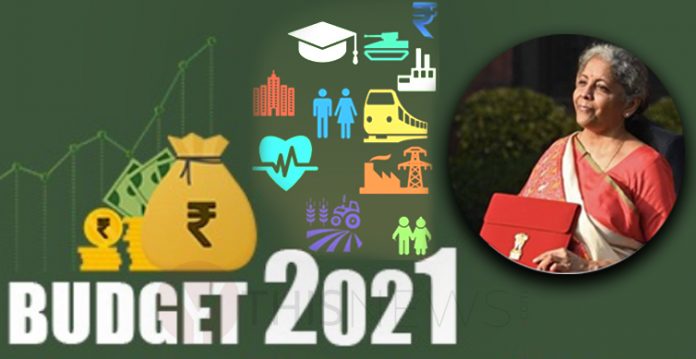Hon’ble Finance Minister of the country, Nirmala Sitharaman presented the Union Budget 2021-22 on Monday. This budget was special in numerous ways as all eyes were glued to the TV screens with hope. The FM presented the first-ever digital budget as she read the budget document on a ‘Made in India’ tablet instead of the standard ‘Bahi-Khata’. The pandemic-hit country’s economy craved for immediate measures to be taken to pave way for nation’s path to recovery in the first budget post covid-19 pandemic.
Taking a cue from the stock market rally, it seems the FM did meet the D-street expectations, to say the least. Sensex zoomed 2,315 points ending the trading session at 5% up and recorded the biggest Budget day rally ever since 1997.
In a nutshell, the budget seemed to be in sync with what the economy needed i.e. liquidity and growth. Increased outlay on capital expenditure, encouraging infra, and focus on the healthcare sector coupled with no increase in personal or corporate taxes are the highlights of the budget. Contrary to the popular anticipation, no new cess or tax was levied on the super-rich leaving a sigh of relief for the taxpayers. Read on to have a deeper look at the key budget proposals:
Macro policy updates: Fiscal deficit targets slipped:
At the outset, FM acknowledged that the pandemic has led to unforeseen hits to the fiscal deficit targets of the economy. Low revenue inflow due to the lockdown coupled with increased government expenditure to provide essential relief has led to the widened deficit. The fiscal deficit for FY21 has been pegged at 9.5% of the GDP and at 6.8% for FY22 in a sharp correction from the original target of 3.5%. Nevertheless, slippage in the fiscal deficit target is a positive from the Budget as increased capital outlay is the need of the hour. The government intends to resort to borrowings from small savings fund to fund the deficit.
Privatization, monetization, and disinvestments:
The government has set a realistic disinvestment target of INR 1.75 lakh crore with the privatization of public sector undertakings and financial institutions including BPCL, Shipping Corp, two PSU banks, and one insurance company. The FM also mentioned that the government intends to undertake the much-awaited LIC IPO in FY21-22.
Major push for the Healthcare sector:
FM announced a new centrally sponsored scheme focused on developing healthcare capabilities – PM AtmaNirbharSwasth Bharat Yojna with an outlay of INR 64,180 crores over the next 6 years. In addition, INR 35,000 crores have been allocated for the covid-19 vaccine. The FM added that two more made-in-India vaccines may soon be available. The total spends on healthcare and well-being is expected to be INR 2.2 lakh crore – a steep rise of 137% from the previous year. This comes as a major boost for the country’s healthcare sector considering India has been one of the lowest healthcare spending nations around the world with a healthcare budget accounting for less than 1% of GDP.
Income tax proposals – Personal Taxation
Interest earned on Provident Fund taxable:
To tax high-income employees who have been enjoying tax-free interest income till now, Interest earned on PF contributions over INR 2.5 lakhs will be henceforth taxable
Reduced compliance burden for certain senior citizens:
Senior citizens over 75 years of age and earning the only pension and interest income have been exempted from filing Income tax returns.
Time limits for filing revised and belated returns reduced by 3 months:
Taxpayers can now file belated returns or revised returns only up to 3 months prior to the end of the relevant assessment year.
TDS / TCS rates doubled for non-filers of Income-tax return:
With an aim to increase the number of tax return filers, withholding tax rates have been doubled in the case of persons who have not filed income tax returns for the past two years.
Other tax and regulatory changes:
Tax audit limit increased:
To incentivize the digital economy, the exemption limit for tax audit increased from INR 5 crores currently to INR 10 crores in case of assessees undertaking 95% of their transactions digitally
Relief for advance tax on dividend income:
Acknowledging that dividend income cannot be estimated prior, the advance tax liability on dividend income will be due after declaration or payment of dividend.
Tax planning tools plucked:
The claim of a tax break on goodwill, tax neutrality on slump exchange transaction and the tax-free amount received by the partners from partnership firm upon reconstitution are some of the tax planning tools which India Inc had been enjoying based on judicial rulings, all of these have now been abolished by the Budget 2021
Foreign investment limit increased into Insurance sector:
The FDI cap in the insurance sector has been increased from 49% to 74% with certain conditions to ensure that control remains with Indian residents.


